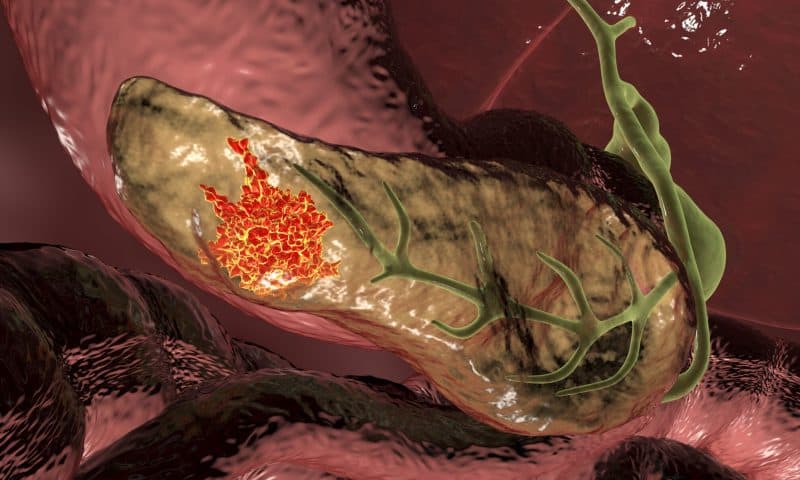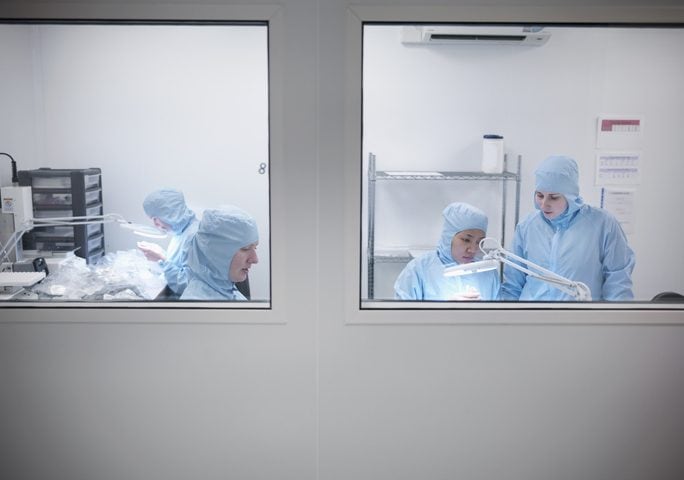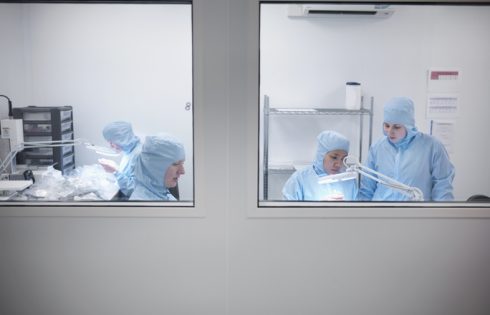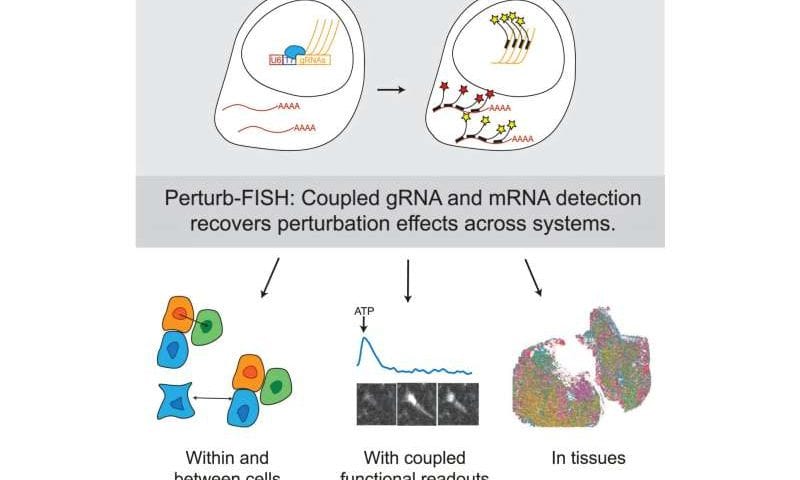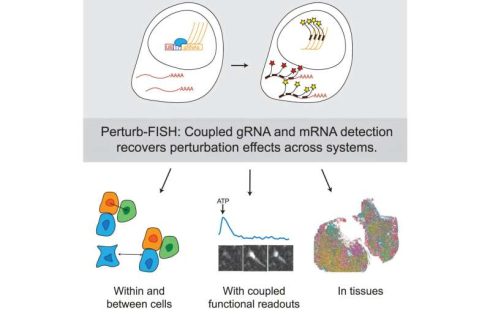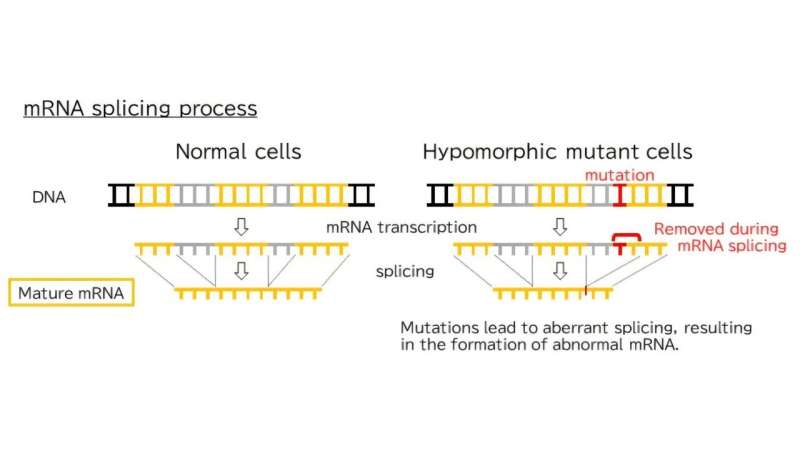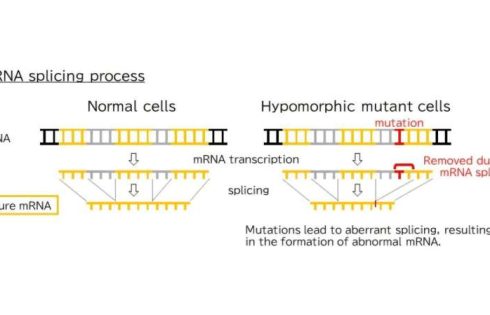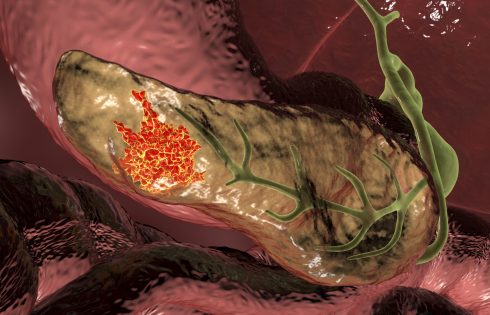
Pancreatic cancer is one of the deadliest cancers worldwide, with a five-year survival rate of 13%. The poor prognosis is due in part both to late detection and the cancer’s capacity to adapt and resist therapy. Laboratory studies by researchers at the University of Verona, the University of Glasgow, and the Botton-Champalimaud Pancreatic Cancer Centre, have now implicated extrachromosomal DNA (ecDNA) carrying the MYC oncogene as a hidden driver of this adaptability.
“Pancreatic cancer is often called a silent killer because it’s hard to detect until it’s too late,” said Peter Bailey, PhD, director of translational research at the Botton-Champalimaud Pancreatic Cancer Centre. “We know that part of its lethality arises from the ability of tumor cells to ‘shape shift’ under stress. Our study shows that ecDNA forms a big part of that story.” Bailey is co-corresponding author of the team’s published paper in Nature, titled “MYC ecDNA promotes intratumor heterogeneity and plasticity in PDAC.” In their paper the researchers’ stated, “Collectively, our work establishes MYC ecDNAs as a key driver of genomic plasticity in PDAC, where they promote rapid and flexible adaptation by amplifying oncogenes, creating heterogeneity, and enabling reversible phenotypic changes.”
Intratumor heterogeneity and phenotypic plasticity drive tumor progression and therapy resistance, the team wrote. However, “… the genetic mechanisms underlying phenotypic heterogeneity are still poorly understood.” For their newly reported study, the investigators sequenced a large panel of patient-derived organoids (PDOs), finding that some pancreatic cancer cells gain a major survival edge by carrying copies of critical cancer genes—such as MYC—on circular pieces of DNA that exist outside of the chromosomes that house most of our genetic material.
These ecDNA genetic rings are free in the cell nucleus, enabling tumor cells to swiftly ramp up gene expression, change their shape, and survive in otherwise hostile environments. The researchers discovered ecDNA to be surprisingly common in pancreatic tumors, particularly for oncogenes like MYC, which drives cancer growth and metabolism. “… we provide a detailed analysis of ecDNAs in PDAC,” they noted. “We have demonstrated that ecDNAs are a major source of high-level amplifications in key PDAC oncogenes and a major contributor to MYC heterogeneity in PDAC.”
Elena Fiorini, PhD, co-first author and senior postdoc, explained, “We saw far more variability in MYC copy number when MYC was on ecDNA. Some cells carried dozens—or even hundreds—of extra MYC copies, giving them a large growth advantage under certain conditions.” The authors further noted, “PDOs and tissues harboring MYC on ecDNA displayed significant heterogeneity of MYC copy number and expression, compared with tumors having MYC on chromosomal DNA.”
Such flexibility underscores the profound intratumor heterogeneity characteristic of pancreatic cancer, where myriad sub-populations coexist and respond differently to treatment. Targeting one subset often fails against another, fueling resistance. “… Overall, we found a heterogeneous landscape of genomic amplifications in PDOs and that ecDNA tumors display features of more biologically aggressive disease,” the team pointed out.
Added Daniel Schreyer, co-first author and a former University of Glasgow PhD student, “It’s effectively a ‘bet-hedging’ strategy. You get pockets of cells that carry very high MYC levels, which is beneficial under certain conditions, and others with fewer copies, which might do better in another environment—all within the same tumor.”
A key advantage of this study is that the organoids—mini-3D replicas of pancreatic tumors grown in the lab—were derived directly from patients with early-stage disease. These organoids preserve much of the genetic make-up of the original tumor, making them excellent testbeds for studying cancer. Unlike methods that artificially introduce ecDNA, these lab models reflect genuine ecDNA variants found in real tumors.
“This approach offers real-world insight into how dynamic and disordered a tumor can be,” said Fiorini. “We see firsthand that even when two patients both have MYC on ecDNA, the structure of that circular DNA can differ substantially—leading to big variations in MYC expression.”
To see how ecDNA drives adaptation, the researchers grew patient-derived organoids and removed vital growth signals—such as WNT factors—and then observed how these organoids responded to the stress. “We found that organoids bearing MYC on extrachromosomal DNA could shift their dependency on WNT,” explained Antonia Malinova, PhD, co-first author and a former PhD student at the University of Verona. “Essentially, cells with high levels of ecDNA became more self-sufficient, no longer needing those external signals to survive.”
The authors stated, “Our analysis revealed that MYC amplification on ecDNA provides a deterministic mechanism for rapid environmental adaptation. A WNT-depleted culture environment drove the rapid selection of cells carrying from dozens to hundreds of ecDNA molecules that could proliferate independently of stromal signals.”
The study also revealed a clear link between high MYC levels and changes in tumor cell shape and behavior. When MYC ecDNA levels soared, cells morphed into more aggressive, solid structures—losing their more organized, gland-like architecture. “Here, we show that extrachromosomal DNA (ecDNA) is a major source of high-level focal amplification in key oncogenes and a major contributor of MYC heterogeneity in pancreatic ductal adenocarcinoma (PDAC),” the investigators stated.
“What’s remarkable,” said co-corresponding author Vincenzo Corbo, PhD, from the University of Verona, “is how rapidly these ecDNA-based copies can appear or disappear depending on the environment. If the cancer is under pressure—say, lacking key growth factors—cells with ecDNA can crank up MYC expression to survive. But if that pressure lifts, they can lose some of these extra DNA circles to avoid the downsides of carrying too many copies.”
Indeed, expressing MYC at high levels can trigger DNA damage, forcing cancer cells to carefully balance the costs and benefits of ecDNA retention. “That was unexpected,” said Corbo. “It challenges the assumption that more MYC is always better for a cancer cell—there’s a real fitness cost to maintaining such high levels.”
Although extrachromosomal DNA only appears in about 15% of patient samples in the reported study, that subset might be particularly aggressive or prone to therapy resistance. As a result, detecting or disrupting ecDNA could open new therapeutic windows. “We might imagine a strategy that exploits the vulnerabilities introduced by ecDNA,” noted Corbo. “Perhaps pushing cancer cells to dial MYC up to a point where they can’t handle the DNA damage, or blocking the molecular circuits that maintain these DNA rings so cells lose them altogether.”
However, the authors caution that such ideas remain early-stage. “ecDNA is a double-edged sword—helpful for quick adaptation but costly to maintain,” Corbo pointed out. “The challenge is to tip that balance in favor of the patient.”
The new work broadens our understanding of genomic plasticity—challenging the notion that the genome is always “fixed.” “We knew the tumor’s surroundings could drive changes, but not that WNT signaling could so directly rewrite DNA,” Bailey commented. “We assumed we’d see mostly epigenetic shifts, so seeing this level of genomic re-engineering was definitely a surprise.”
And with pancreatic cancer cases projected to rise in the coming years, insights into ecDNA’s role could guide future strategies to intercept or exploit this genetic feature—potentially making tumors more vulnerable to treatment.






